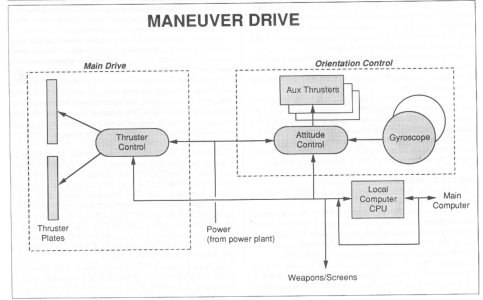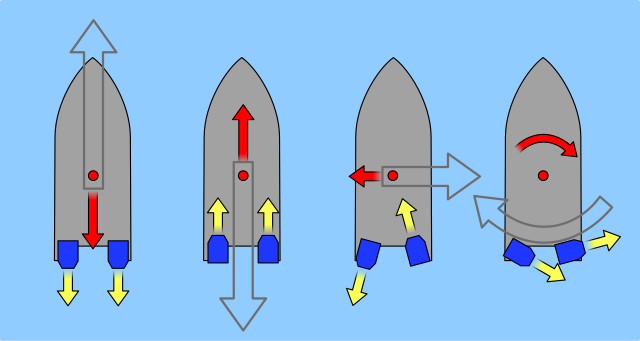Me too. Thanks for holstering the snark. It's good to have honest disagreements without the add of snark.I have tried very hard to avoid starting replies with words like "actually, nope, wrong" as I have come to the conclusion people immediately think I am being snarky even when that is not my intent. I still make mistakes but am trying to come across a little less confrontational
Do you mean MegaTraveller here? I am not a fan of the handwavium DGP wrote to "explain" thruster plates.
No, this is your error. If they have the same acceleration then they have identical "thrust to weight" - The BB drive produces a larger "force" than the fighter drive.
If the BB and the fighter have 6g acceleration then everything in the right of the equation has to equate to the same answer.
6g =F(BB)/m(BB) = F(fgt)/m(fgt)=BB(handwavium)=fgt(handwavium)
So completely different. Also in space you can spin about your centre of gravity, something an ocean ship can not do.
I'm not surre you have a picture of how the thrusters work. They have to be in pairs (x,-x), (y,-y}, (z,-z)
If I want to spin about the x axis I fire the x and -x thrusters, this produces circular motion about the and has no effect on forward momentum.
Once I have altered my pitch, roll and/or yaw I fire the main engine, this alters the forward momentum vector, by doing this randomly for a few minutes at a time then the future position becomes more difficult to predict.
The reference to mass in ships goes back to original CT. I forget which version it got removed in. We are in agreement about the DGP explanation.
Just to be clear, thrust to weight implies you know the weight (or mass if we are in space) of the object and the ft/lbs of your engine providing thrust. That's a typical thrust to weight explanation for aeronautics. To be more explicit here, the thrust to weight changes continuously for an aircraft in flight for many reasons. You can also refer to an aircrafts mass on the ground and the maximum thrust at 100% operating power for a more static number. Traveller provides no mass numbers, only displacement. I probably should have started with rockets and not planes for this as it's a better analogy as aircraft get lift from wings and Traveller ships do not. Using rockets as the example, your thrust to weight ratio has to be greater than 1 to lift off from a 1G world as you derive no lift from your vehicle. It also get a bit wonkier as rocket fuel has multiple varieties with a higher specific impulse than say aviation fuel. And, of course, it's not a good analogy to Traveller as they use energy for movement. Without actual data this conversation will go nowhere. Your formula does site the active ingredient here - lots of hand wavium.
Not sure how much you study naval technology, but over the last decade or so the use of thruster pods (aka azipod) has really taken off for all kinds of ships - including military ones. I've seen a 85,000 ton cruise ship do a 180 from the dock. It's fitted with thruster pods so it does not need any tugs. These also are electrically powered. Some ships are doing away completely with shaft/rudder systems and going with azipods/thrusters. Azipods can actually shift a ship sideways - though drag must be overcome.
While yes, you can spin on your axis with your main engine, it's not actually shifting the ship sideways - it's just spinning in place. Thrusters (using the conventional definition) are meant for maneuvering and not ship movement like it's main engine. Traveller doesn't posit the invention of azipod technology since it did not exist in 1977. Subsequent versions since CT (aside from SOM - which actually is closer to azipod operations) have retained engines in back that push the ship forward under newtonian movement characteristics. The more massive a ship is the more energy required. That's why I cited the Space shuttle RCS/OMS engine types. OMS is used to push it (Traveller main engines) and RCS is used to spin it (Traveller thrusters). To be fair, a Traveller ship will be fitted with bow and stern thrusters (laterally and ventrally) and could use them to shift itself without spinning, then fire the opposite ones to cancel out the momentum. The problem with that is conventional wisdom says they are just there for maneuvering (i.e. turning) in space and the main engine is there to actually move the ship. Technically it's a correct statement, but also something that shouldn't used to justify such movement. Now, if you hung your engines on pods fore and aft then you would have a much more valid point. Engineering wise while you could go with a single pod fore/aft, I would expect them to be in pairs for greater control and flexibility.



